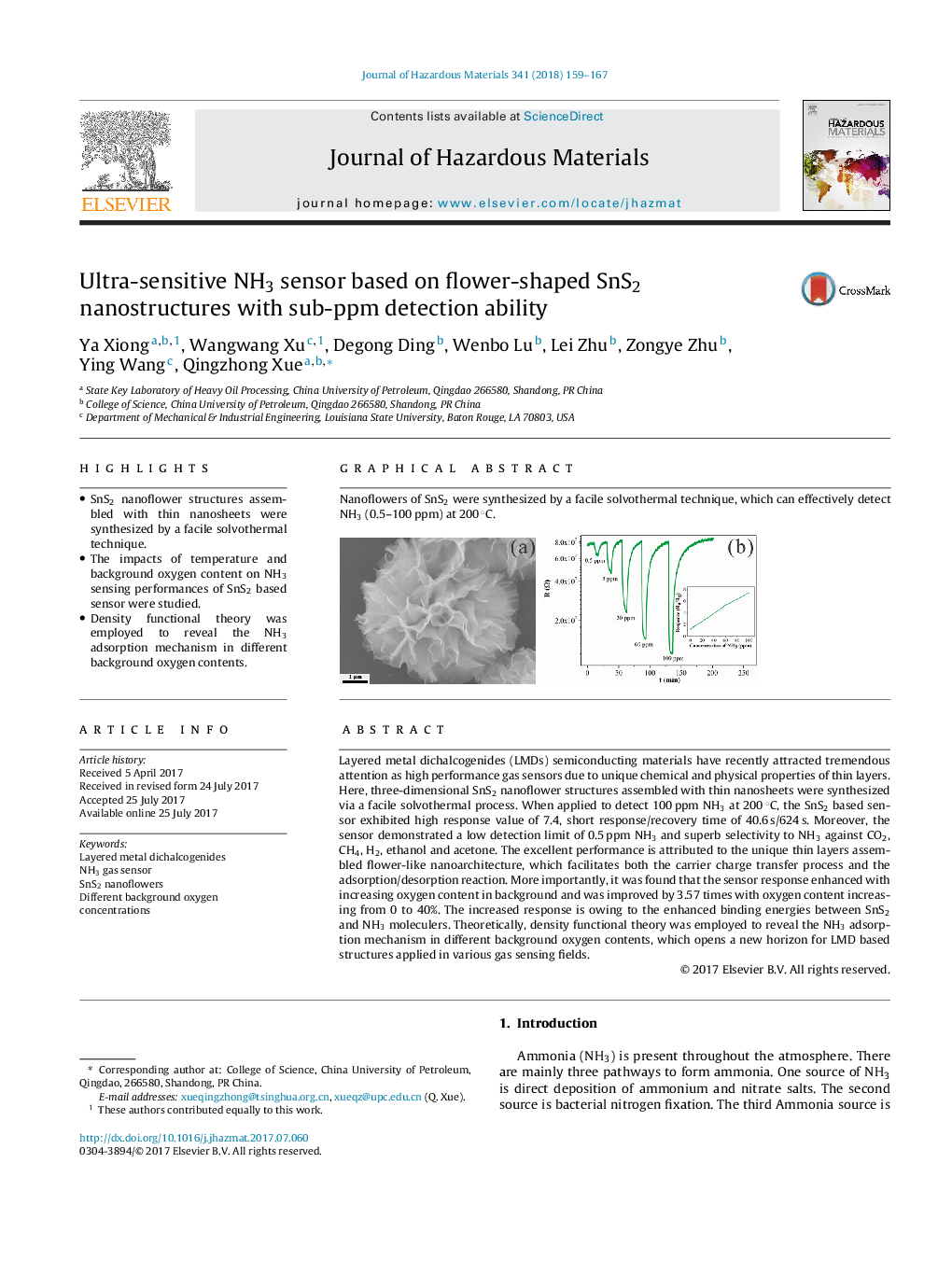| Article ID | Journal | Published Year | Pages | File Type |
|---|---|---|---|---|
| 4979259 | Journal of Hazardous Materials | 2018 | 9 Pages |
â¢SnS2 nanoflower structures assembled with thin nanosheets were synthesized by a facile solvothermal technique.â¢The impacts of temperature and background oxygen content on NH3 sensing performances of SnS2 based sensor were studied.â¢Density functional theory was employed to reveal the NH3 adsorption mechanism in different background oxygen contents.
Layered metal dichalcogenides (LMDs) semiconducting materials have recently attracted tremendous attention as high performance gas sensors due to unique chemical and physical properties of thin layers. Here, three-dimensional SnS2 nanoflower structures assembled with thin nanosheets were synthesized via a facile solvothermal process. When applied to detect 100 ppm NH3 at 200 °C, the SnS2 based sensor exhibited high response value of 7.4, short response/recovery time of 40.6 s/624 s. Moreover, the sensor demonstrated a low detection limit of 0.5 ppm NH3 and superb selectivity to NH3 against CO2, CH4, H2, ethanol and acetone. The excellent performance is attributed to the unique thin layers assembled flower-like nanoarchitecture, which facilitates both the carrier charge transfer process and the adsorption/desorption reaction. More importantly, it was found that the sensor response enhanced with increasing oxygen content in background and was improved by 3.57 times with oxygen content increasing from 0 to 40%. The increased response is owing to the enhanced binding energies between SnS2 and NH3 moleculers. Theoretically, density functional theory was employed to reveal the NH3 adsorption mechanism in different background oxygen contents, which opens a new horizon for LMD based structures applied in various gas sensing fields.
Graphical abstractNanoflowers of SnS2 were synthesized by a facile solvothermal technique, which can effectively detect NH3 (0.5-100 ppm) at 200 °C.Download high-res image (188KB)Download full-size image
